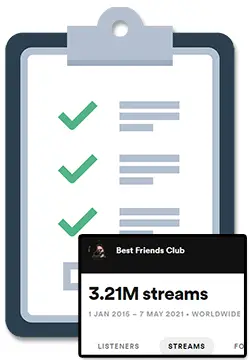House music is a genre of electronic dance music that originated in the 1980s in Chicago. It is characterized by its repetitive 4/4 beat, synthesized melodies, and use of samples.
While house music can incorporate a wide range of instruments and sounds, there are four elements that are particularly common: drums, bass, melodic accompaniment, and hooks.
In this article, we will explore each of these elements, what instruments are typically used, and explain their importance to the genre based on research I’ve done & from my experience producing house music tracks for the last 5 years.
Whether you are a fan of house music or a musician looking to produce your own tracks, understanding these elements and their instruments is essential to creating authentic and engaging house music.
House Music Drums: Drum Machines & Samplers
The drum sound in house music primarily comes from the use of electronic drum machines or the use of samplers that sample drum hits from other records, drum machines, or live recordings.
In the early days of house music, drum machines were used extensively to create the signature sound of house music with the Roland TR-808 and TR-909 being particularly popular.
Today, original versions of these drum machines are highly coveted but very hard to come by since they are no longer in production and are very expensive on the second-hand market.
Instead, it is much more common to use sample packs that include pre-recorded samples of these original drum machines that are either completely raw or have been processed to quickly fit a new production.
My personal favorite sample pack from drums is from an awesome company called Samples From Mars. In particular, their 909 drum hits have been used in almost every single one of my recordings.
In addition to the basic 4/4 drum pattern, it is also common to add in extra percussion that is either programmed in or sampled to add more groove, energy, and character to house music.
I’ll often layer percussion or top loops over the top of my basic 4/4 drum loops to add more groove and help distinguish one track from another.
House Music Bass: Synthesizers & Samplers
The bassline in house music provides the foundation of the track, sets the tone for the entire song, and unlike other forms of music like pop or rock, it is often the centerpiece in any house music song even more so than the vocals.
Synthesizers and samplers are used to create the deep, powerful basslines found in house music with simple sinewave sub basses, acid-style Roland 303 synthesized bass, or sampled electric bass guitar being the most common styles of bass in house music.
In most cases, the bassline is sequenced in on a synthesizer or sampler but in some cases, house music artists may sample the entire bassline from another song and cut it up or manipulate it.
My personal favorite approach to bass in the house music that I create is to layer a simple sinewave sub-bass for the low-end with a sampled bass guitar for the mid to high end to add character and vibe.
Melodic Elements in House Music: Chords, Pads & Samples
It’s very common for house music songs to have melodic elements such as chords, pads, leads, and samples that sit on top of the drum and bass tracks to provide character and a harmonic accompaniment for the vocal or hook.
Chords
Either synthesized or sampled piano or electric piano are very common instruments used to add chords to a house music track with a traditional piano or the Fender Rhodes being the usual culprits.
Pads & Strings
Synthesized pad sounds or a string sound sampled from a traditional instrument or a synthesizer like the Korg M1 are often used to fill out the soundscape and add character & energy.
Samples
Just like with almost every other element in house music, samples are also used to add extra melodic elements to a track. This can include minor elements such as a sampled chord progression to more complex elements like another song chopped up or manipulated.
House Music Hooks: Vocals, Synthesizers & Samplers
House music often incorporates hooks or catchy phrases that are repeated throughout the song through the use of synthesized leads, vocals, or samples.
Vocal hooks are particularly common in house music, with producers using samples from other songs or recording their own vocals to create unique hooks that are instantly recognizable.
When vocals aren’t used, there are usually melodies used for the hook that are either created from synthesizers or samples.




